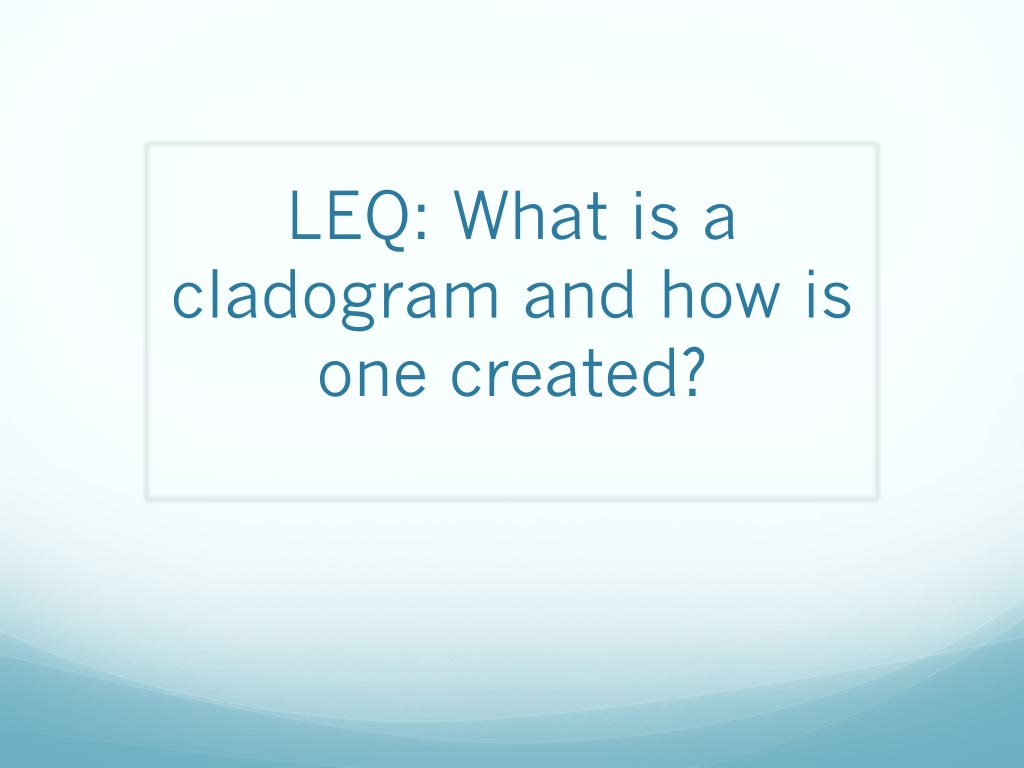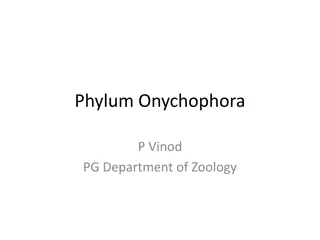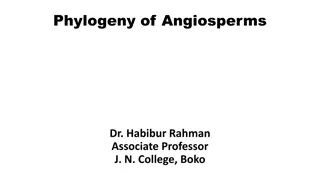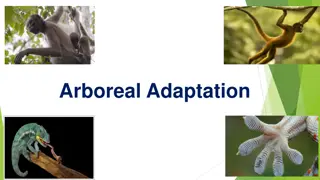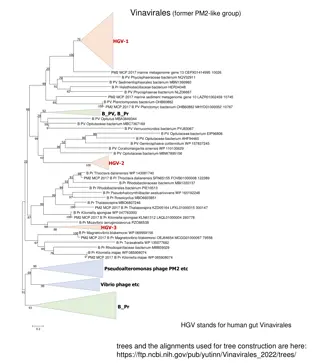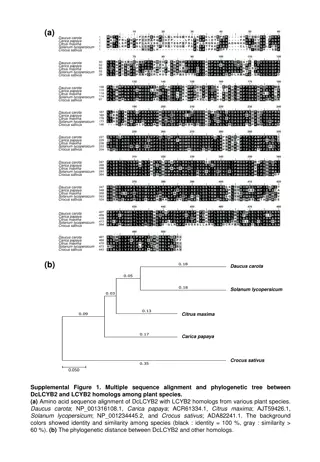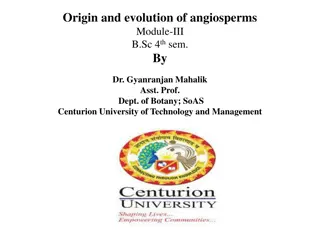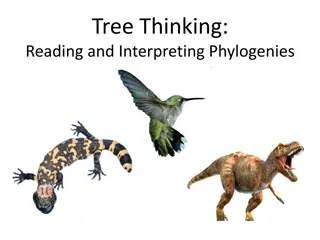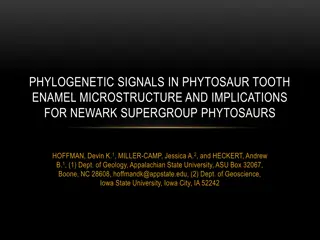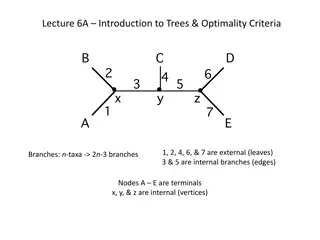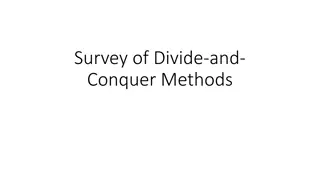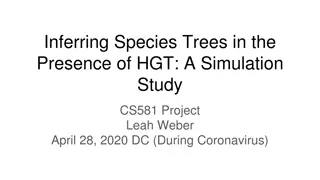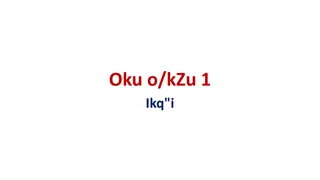Understanding Cladograms and Phylogenetic Analysis
Cladograms are used in cladistics to illustrate evolutionary relationships between organisms based on shared ancestral and derived characters. They are created by grouping species by common descent, forming clades that include an ancestral species and all its descendants. Valid clades are monophyletic, consisting of ancestor species and all its descendants. Phylogenetic analysis involves inferring evolutionary relationships using shared derived characters. Outgroups are closely related species used to compare with ingroup species to differentiate shared derived and ancestral traits. The process helps in constructing phylogenetic trees to understand evolutionary histories.
Download Presentation

Please find below an Image/Link to download the presentation.
The content on the website is provided AS IS for your information and personal use only. It may not be sold, licensed, or shared on other websites without obtaining consent from the author. Download presentation by click this link. If you encounter any issues during the download, it is possible that the publisher has removed the file from their server.
E N D
Presentation Transcript
LEQ: What is a cladogram and how is one created?
Cladistics Cladistics groups organisms by common descent A clade is a group of species that includes an ancestral species and all its descendants Clades can be nested in larger clades, but not all groupings of organisms qualify as clades
A valid clade is monophyletic, signifying that it consists of the ancestor species and all its descendants A B Group I C D E F G (a) Monophyletic group (clade)
Shared Ancestral and Shared Derived Characters In comparison with its ancestor, an organism has both shared and different characteristics A shared ancestral character is a character that originated in an ancestor of the taxon A shared derived character is an evolutionary novelty unique to a particular clade
Inferring Phylogenies Using Derived Characters When inferring evolutionary relationships, it is useful to know in which clade a shared derived character first appeared
Fig. 26-11 TAXA Lancelet (outgroup) Leopard Lamprey Tuna Tuna Vertebral column (backbone) 1 1 1 1 1 0 Vertebral column Hinged jaws 1 1 1 1 0 0 Salamander Hinged jaws 1 0 0 0 1 1 Four walking legs Turtle Four walking legs 1 1 0 0 0 0 Amniotic (shelled) egg Amniotic egg Leopard 0 1 0 0 0 0 Hai Hai r r (b) Phylogenetic tree (a) Character table
An outgroup is a species or group of species that is closely related to the ingroup, the various species being studied Systematists compare each ingroup species with the outgroup to differentiate between shared derived and shared ancestral characteristics Homologies shared by the outgroup and ingroup are ancestral characters that predate the divergence of both groups from a common ancestor
Fig. 26-12 Phylogenetic Trees with Proportional Branch Lengths In some trees, the length of a branch can reflect the number of genetic changes that have taken place in a particular DNA sequence in that lineage Drosophila Lancelet Zebrafish Frog Chicken Human Mouse
Fig. 26-13 Branch length can represent chronological time, and branching points can be determined from the fossil record Drosophila Lancelet Zebrafish Frog Chicken Human Mouse PALEOZOIC MESOZOIC CENOZOIC 54 2 25 1 65.5 Present Millions of years ago
From Two Kingdoms to Three Domains Early taxonomists classified all species as either plants or animals Later, five kingdoms were recognized: Monera (prokaryotes), Protista, Plantae, Fungi, and Animalia More recently, the three-domain system has been adopted: Bacteria, Archaea, and Eukarya The three-domain system is supported by data from many sequenced genomes
Fig. 26-21 EUKARYA Dinoflagellates Land plants Forams Green algae Ciliate s Diatoms Red algae Amoebas Cellular slime molds Euglena Trypanosomes Leishmania Animals Fungi Sulfolobus Green nonsulfur bacteria Thermophiles (Mitochondrion) Spirochetes Chlamydia Halophiles COMMON ANCESTOR OF ALL LIFE Green sulfur bacteria BACTERIA Methanobacterium Cyanobacteria (Plastids, including chloroplasts) ARCHAEA
